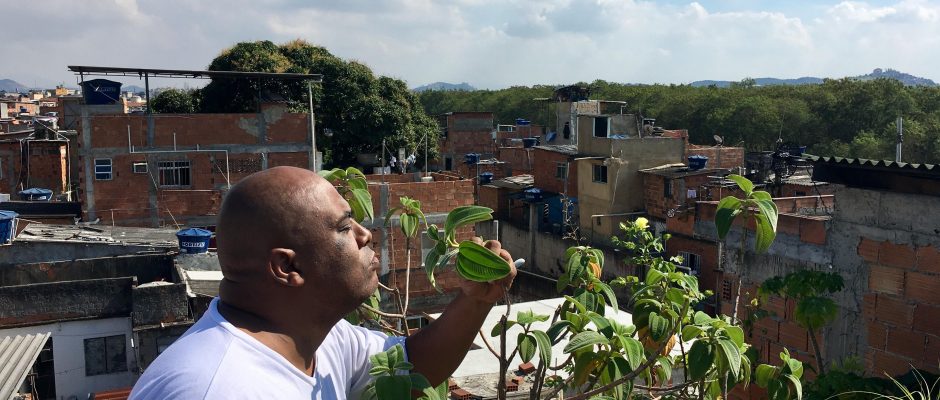Greening Rio's favelas one roof at a time

When Luis Cassiano Silva started Green Roof Favela in 2014, residents of Parque Arará in Rio’s North Zone were skeptical: “Creating green roofs in the favela—what a crazy project!” The objective is simple: to transform an urban heat island through a refreshing and soothing “green canopy”—in effect, making the area a more pleasant place to live. To this end, the initiative works to educate residents about green roofs and their capacity to reduce temperatures.
A resident of Parque Arará for twenty-five years, Cassiano has worked in various fields—theater, cinema, music, show production—and describes himself as a”cultural activist.” From a young age, he became interested in plant life and felt a connection to nature. He is highly knowledgeable about plants, especially their medicinal qualities, and devotes his free time to Green Roof Favela.
Cassiano’s inspiration for Green Roof Favela stems from models implemented in European countries such as Germany, where the benefits of green roofs are widely recognized. Indeed, drawing inspiration from the Scandinavian sod roof model dating back to the Middle Ages, Germany has been a pioneer of green roof technologies since the 1950s in an effort to mitigate the adverse effects of urbanization.
Cassiano sought to reproduce a similar model in Parque Arará with vegetation adapted to Brazil’s tropical climate—“plants that resist heat.” The research and development phase was important: Cassiano experimented with various techniques to achieve the best possible results.The social, environmental, and economic benefits to green roofs are numerous, from providing thermal protection and improving air quality to mitigating stormwater runoff pollution and saving costs for both residents and cities.
Green Roof Favela, which does not receive any funding, guides residents in the process of creating green roofs—from acquiring materials to building the roof. In addition, one of the initiative’s main activities is educating children in the community about the importance of respecting plants, and more broadly, the environment. “Most children in the favela have no interaction with the forest and do not respect it… It’s a culture of destruction. We must educate them, slowly,” Cassiano describes.
More generally, “In the favela, there are two colors [red and gray]. There are studies on color that say that red [signifies] passion, force, tension, explosion. But there is also gray—more melancholic, sad, depressing… The favela is this: samba and love, but also sadness because it is poor. The color green will reduce violence. When we’re close to green space, we feel good. Favelas need this.”
*Green Roof Favela is one of over 100 community projects mapped by Catalytic Communities (CatComm), the organization that publishes RioOnWatch, as part of our parallel ‘Sustainable Favela Network‘ program launched in 2017 to recognize, support, strengthen, and expand on the sustainable qualities and community movements inherent to Rio de Janeiro’s favela communities. Check out all the profiles of mapped projects here.Contact: Facebook
Year Founded: 2014
Community: Parque Arará, Benfica (North Zone)
Mission: To mitigate the urban heat island effect and purify the air with green roofs
Public Events: Seed exchanges, educational activities for children
in *Highlight, by International Observers, Favela Qualities, Interviews & Profiles, Solutions, Sustainability




